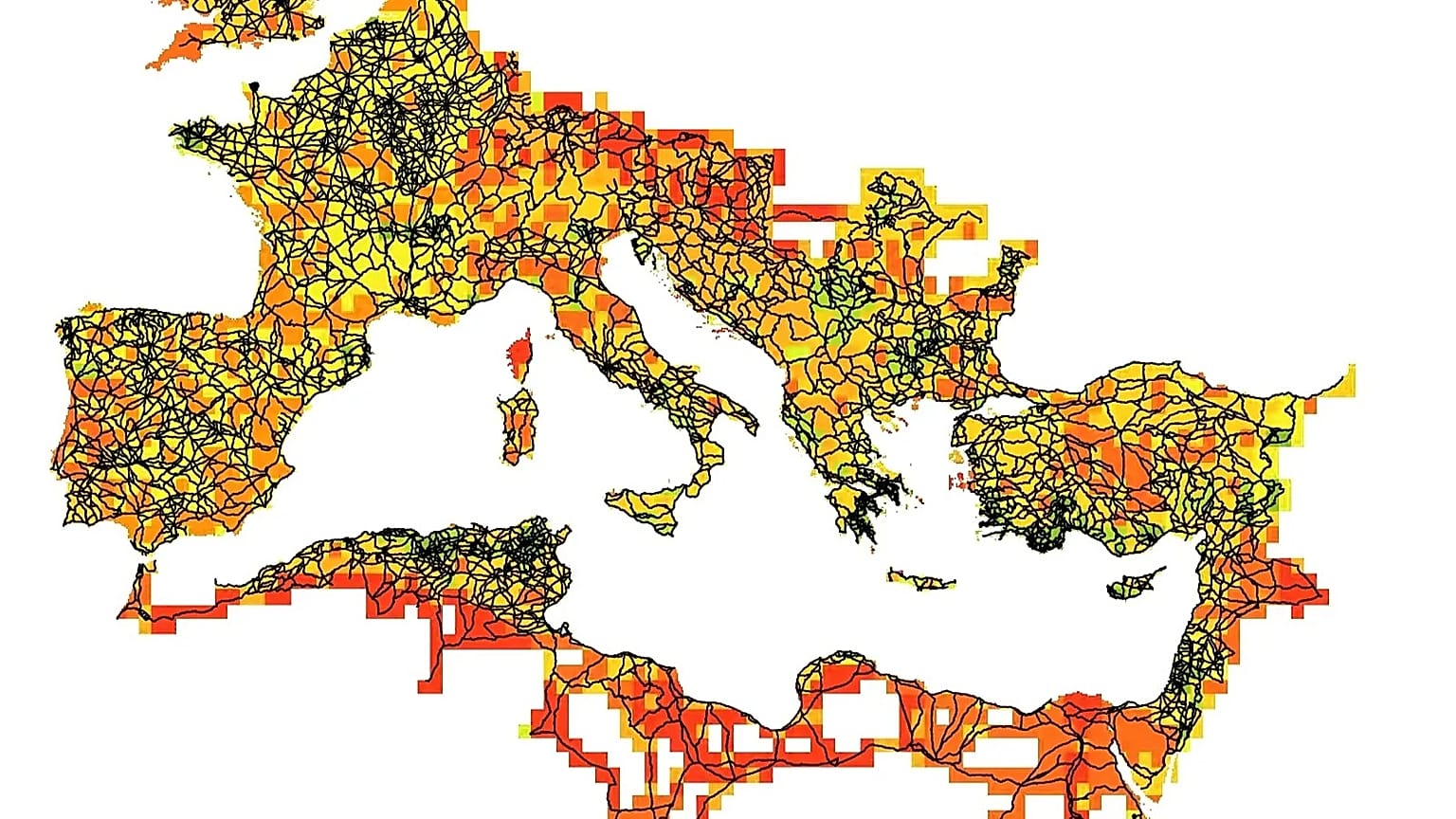Science
Researchers Unveil Extensive Mapping of 300,000 km of Roman Roads

A groundbreaking digital project has successfully mapped approximately 300,000 kilometres of Roman roads, nearly doubling the previously documented length. The Itiner-e initiative, led by researchers from the Universitat Autònoma de Barcelona and Denmark’s University of Aarhus, aims to enhance our understanding of the Roman Empire’s infrastructure and its implications for governance and connectivity.
Published in the journal Scientific Data, this comprehensive dataset represents a synthesis of historical and archaeological research spanning centuries. The mapping project covers the Roman Empire at its peak around 150 AD, encompassing almost 4 million km² across Europe, North Africa, and the Middle East.
What distinguishes this project is the revelation that only 2.737% of the mapped routes have a certified spatial location. In contrast, 89.818% are conjectured, and 7.445% are hypothetical. This significant discrepancy highlights the challenges of accurately detailing ancient road networks.
Methodology Behind the Mapping Project
The Itiner-e team employed a three-phase methodology to construct this digital atlas. Initially, they identified roads using a combination of archaeological, historical, and epigraphic sources, including excavations, historical documents such as the Antonine Itinerary and the Tabula Peutingeriana, and milestones known as Roman kilometre markers. They also utilized the LIRE database, which features 8,388 milestones bearing Latin inscriptions.
Next, the researchers spatially located these roads by cross-referencing findings with modern and historical topographic maps, aerial photographs—including missions conducted by the USAF in the 1950s—and satellite imagery from the Corona programme (1967-1972). The latter proved crucial for regions now submerged beneath contemporary reservoirs. Finally, the team manually digitised each road segment, achieving a spatial resolution ranging from five to 200 metres, ensuring the representation followed the natural landscape rather than simplistic straight lines.
The outcome is a detailed illustration comprising 14,769 road segments, meticulously organized into a two-level hierarchy. The project also produced confidence maps to highlight areas lacking data, guiding future research efforts.
Impact and Future Prospects
Project leaders Pau de Soto, Adam Pažout, and Tom Brughmans emphasized the transformative potential of the dataset for understanding how the Roman road network facilitated the movement of people, goods, and ideas in antiquity. The high-resolution map opens avenues for new computational studies on connectivity, transport costs, and administrative control, as well as the historical evolution of land mobility.
The Itiner-e project embodies an interdisciplinary, collaborative, and open-source approach, allowing researchers to incorporate new findings while retaining ownership of their contributions. The dataset is accessible to the general public at https://itiner-e.org. Among the best-documented regions are the Iberian Peninsula, Greece, North Africa, the Levant, and Asia Minor, thanks to prior initiatives like Mercator-e and Desert Networks.
Despite its comprehensiveness, the map reveals significant gaps in existing knowledge. Areas with low data representation include northern England, Cornwall, the middle and upper Danube, Tuscany, Corsica, and central Anatolia. These regions are prioritized for future research campaigns, along with North African deserts and mountainous terrains, which present considerable documentation challenges.
The Itiner-e project stands as the most extensive digital map of the Roman road system ever created. With its almost 300,000 kilometres of documented routes, it sheds light on how the Roman Empire effectively moved its legions, facilitated trade, and maintained power for centuries, offering insights that resonate with contemporary discussions about infrastructure and governance.
-

 Top Stories2 months ago
Top Stories2 months agoTributes Surge for 9-Year-Old Leon Briody After Cancer Battle
-

 Entertainment4 months ago
Entertainment4 months agoAimee Osbourne Joins Family for Emotional Tribute to Ozzy
-

 Politics4 months ago
Politics4 months agoDanny Healy-Rae Considers Complaint After Altercation with Garda
-

 Top Stories3 months ago
Top Stories3 months agoIreland Enjoys Summer Heat as Hurricane Erin Approaches Atlantic
-

 World4 months ago
World4 months agoHawaii Commemorates 80 Years Since Hiroshima Bombing with Ceremony
-

 Top Stories2 months ago
Top Stories2 months agoNewcastle West Woman Patricia Foley Found Safe After Urgent Search
-

 Top Stories4 months ago
Top Stories4 months agoFianna Fáil TDs Urgently Consider Maire Geoghegan-Quinn for Presidency
-

 World4 months ago
World4 months agoGaza Aid Distribution Tragedy: 20 Killed Amid Ongoing Violence
-

 World4 months ago
World4 months agoCouple Convicted of Murdering Two-Year-Old Grandson in Wales
-

 World4 months ago
World4 months agoAristocrat Constance Marten and Partner Convicted of Infant Murder
-

 Top Stories3 months ago
Top Stories3 months agoClimbing Errigal: A Must-Do Summer Adventure in Donegal
-

 Top Stories3 months ago
Top Stories3 months agoHike Donegal’s Errigal Mountain NOW for Unforgettable Summer Views









